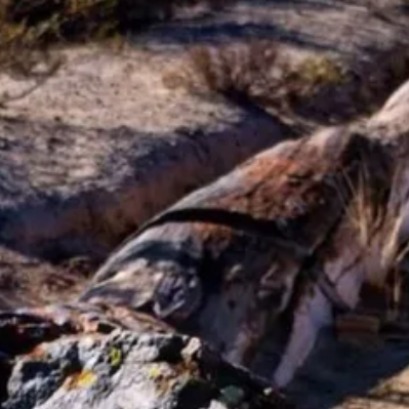MONTE SALE
6 ha of EUCALIPTO GRANDIS STANDING FOREST
Our INTA Concordia Experimental Station announces the sale, through the Cooperating Association, of a total of 6.00 hectares (2 lots) of Eucalyptus grandis, from the original plantation, with an average age of 15 years, located in the Yuquerí Station, 12 km from the city of Concordia, with access to the property from a paved road and good consolidated access roads to the lots.
Bid closing period: August 8, 2023 at 11:00 a.m. at the INTA Concordia Station
Queries and contact Cooperadora by email: montero.mauricio@inta.gob.ar or +5493454930843
For visits to the lot: Mario Carmarán +5491168525464

IT MAY INTEREST YOU
 The forest of the oldest shadows: the story of the petrified trees
The forest of the oldest shadows: the story of the petrified trees
One of the natural treasures of Río Negro turns 23 years old under the protection law that allows its conservation. Where it is and how it was formed. Río Negro celebrates 23 years of conservation in the petrified forest as a Protected Natural Area (ANP). It is a space of 625 hectares that protects an exceptional site of fossil trunks that date back more than 60 million years.
 They promote research in pine resins from the NEA
They promote research in pine resins from the NEA
The forestry industry is one of the most important sectors in the economies of Misiones and Corrientes. Thousands of hectares of pine supply the paper, pulp, boards and sawmill industry. Pinus elliottii, one of the species established in the region, in addition to providing wood, is used to produce resin, a non-wood forest product with high demand in the chemical, pharmaceutical and cosmetic industries. In 2\024, resin extraction of approximately 52,6\0\0 tons was achieved from approximately 18,\0\0\0,\0\0\0 trees in production, generating income and jobs with high expansion potential.
 Experts cant believe it, but this tree is the oldest in the world and continues to bear fruit: it is 4,000 years old.
Experts cant believe it, but this tree is the oldest in the world and continues to bear fruit: it is 4,000 years old.
Nature keeps secrets that defy the passage of time, and one of the most surprising examples is a tree that, approximately 4,000 years old, continues to bear fruit today. This specimen has become a symbol of resistance and longevity, capable of surviving climate changes, landscape transformations and human activity itself.




















